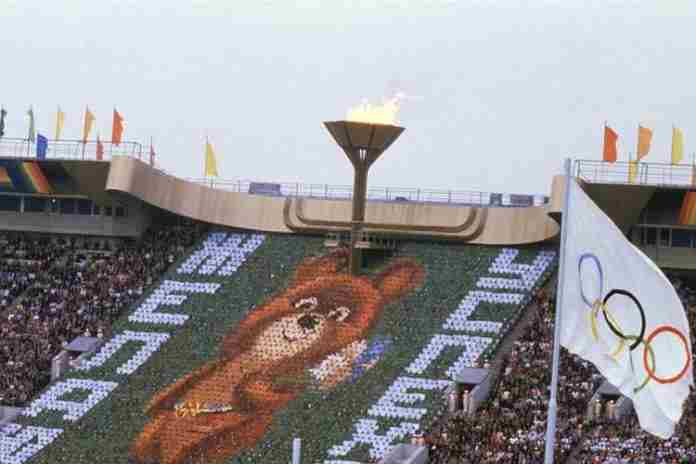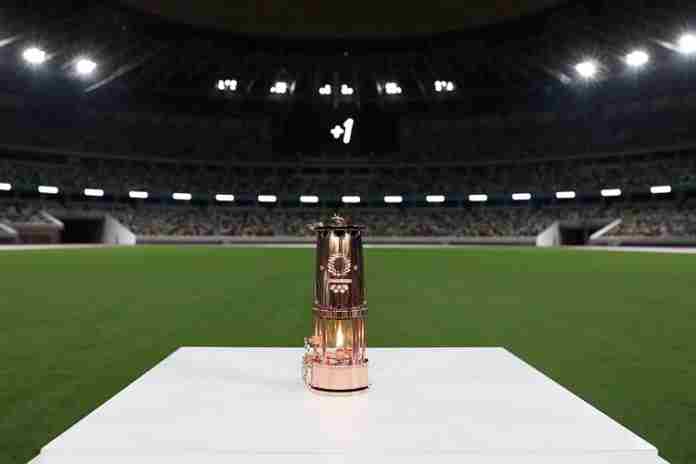(★ Friends: Very grateful to have received 37 donations over the past month toward our server and support costs, covering about 79% of our current bill. But we could use your help to cover the rest; if you wish, please donate here. Thank you. ★)
The International Financial Reporting Standards principles are designed to allow comparison of financial information on a worldwide basis and are considered the authoritative “best practices” in the presentation of financial information.
But even a report under IFRS doesn’t tell the whole story, at least at first glance.
Take the International Olympic Committee’s just-released 2019 Annual Report, which contains detailed financial statements for last year.
The Report appears to show, at first glance, that the IOC had a pretty good year in 2019, despite not receiving a penny in television rights fees:
● For 2019, revenue totaled $694.49 million, with $548.23 million (78.9%) from its TOP sponsorship program and another $119.10 million from licensing and the IOC’s share of Tokyo 2020’s domestic marketing program.
That’s just a fraction of the $2.205 billion received in 2018, but that was an Olympic Winter Games year, with $1.436 billion received in television rights payments. But for a non-Olympic year, not bad, and marginally better than the $661.41 million surplus in the prior non-Olympic year of 2017.
● Expenses for 2019 were shown as $588.53 million, with an operating surplus of $79.96 million.
This included distributions of TOP sponsor program revenues totaling $283.41 million, primarily to the Tokyo 2020 organizers ($100.66 million), Beijing 2022 ($2.54 million), National Olympic Committees ($82.92 million) and the U.S. Olympic & Paralympic Committee ($88.24 million).
There was also $124.32 million paid out for the “Promotion of the Olympic Movement,” which includes the IOC’s payments for the Olympic Broadcasting Service – which includes operation of the Olympic Channel – of $82.37 million and $41.95 million for cultural and heritage programs (such as the Olympic Museum).
A total of $158.00 million was used for Olympic Solidarity programs, including $13.66 million for athlete scholarships, and smaller amounts for Refugee Athlete support, Youth Olympic Games athlete support, NOC administration development, coaching programs ($6.45 million), local sports medicine programs and many more.
Spending also included $17.65 million for half of the World Anti-Doping Agency’s budget, $7.55 million to the Court of Arbitration for Sport, $2.00 million to the International Paralympic Committee and another $12.75 million in assistance to other Olympic-related organizations (like the Association of National Olympic Committees).
General operating expenses for staff salaries, office costs and the like were $188.56 million.
● The operating surplus of $79.96 million was added by good investment results, which added $142.52 million to the bottom line. So for 2019 as a while, the income statement showed the IOC with a net surplus for the year of $222.49 million.
Great, right? Not so fast.
Accounting rules classify regular income and expense items as you would expect, but when the IOC acts as a bank – advancing money to its clients, with the expectation of later payback – the numbers get harder to follow.
In 2019, the IOC advanced a total of $792.61 million in television rights money to the Tokyo 2020 organizers and $248.18 million to the Beijing 2022 organizers. And there were TV rights money advances to Paris 2024, Milan-Cortina 2026 and Los Angeles 2028. In all, the statements show that $1.069 billion was advanced in 2019.
In all, the outstanding advances to all of these organizers over time is shown as $2.092 billion in the “liabilities” section of the IOC’s balance sheet and not as expenses, since they were anticipated to be repaid in 2020 when the IOC was to receive the main share of television rights payments for the Tokyo Games.
Now those television payments are scrambled, depending on whether the Tokyo Games will be held in 2021 and whether and when the IOC will receive that TV money … or receive insurance coverage funds due to the cancellation of the Games.
● At the end of the year, the IOC’s statements showed total assets of $5.34 billion and reserves of $2.51 billion, still very, very impressive. But not as good as one might think, looking at just the bottom line.
For the current Olympic quadrennial, from 2017-19, the IOC reported total revenues of $3.6 billion, with distributions to organizing committees, International Federations, National Olympic Committees and related groups of $3.1 billion or 86.1%.
As the IOC itself notes, the organization is in “a healthy and strong financial position.”
And that position got a little stronger with Wednesday’s announcement that U.S. retail giant Proctor & Gamble had agreed to extend its TOP sponsorship commitment through the Los Angeles 2028 Games.
P&G began its sponsorship in 2010; P&G Chief Brand Officer Marc Pritchard commented:
“As we look forward to the next decade, we recognize the opportunity and the responsibility to use our sponsorship of the Olympic Games for broader impact. In the spirit of the Olympic Movement, we’re making a shared commitment through our partnership to create positive change in the world in the areas of equality and inclusion, environmental sustainability and community impact.”
The company announced a new “Athletes for Good” program which “will issue grants to the causes that Olympic and Paralympic Games athletes and hopefuls are supporting to advance important work with shared core citizenship values.” Some 52 grants will be available over the course of the next year.
But the most meaningful part of the sponsorship might be this:
“As part of the partnership, P&G will lend its expertise and thought leadership to the IOC on how to grow, accelerate and bring innovation to the IOC’s digital capabilities, products and assets. This effort supports the IOC’s strategy to engage people with the Olympic brand and maintain long-term relevance both during and outside Games time.”
Now P&G makes the IOC – and the whole Olympic Movement – look tiny. The Cincinnati-based home goods company had revenue of $67.68 billion in 2019 and produces dozens of familiar brands like Tide, Gillette, Olay, Crest and many more. Its reach could be a key for the Olympic Games to reach more deeply into everyday life, around the world.
This is a partnership to keep an eye on. At the same time, the IOC’s finance team is keeping an eye on the pharmaceutical sector and whether a vaccine is on the way prior to the Tokyo Games in 2021.
Rich Perelman
Editor
You can receive our exclusive TSX Report by e-mail by clicking here. You can also refer a friend by clicking here.

























